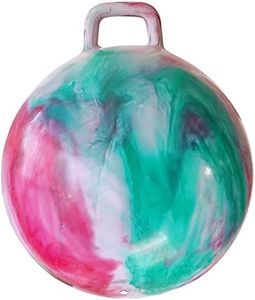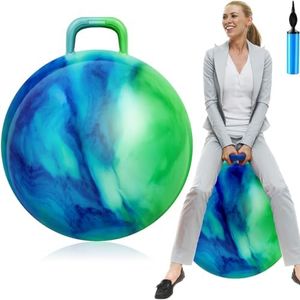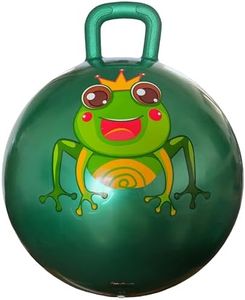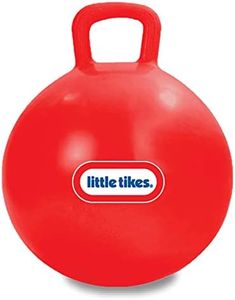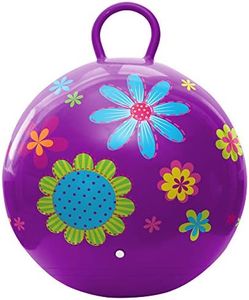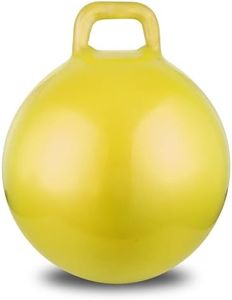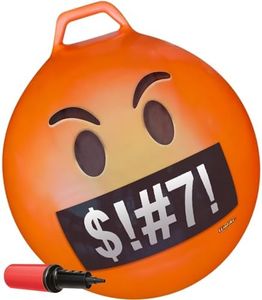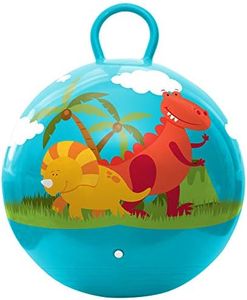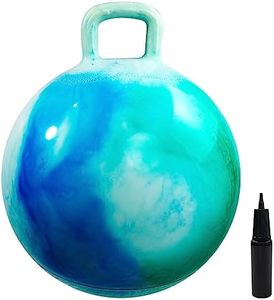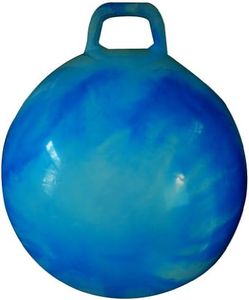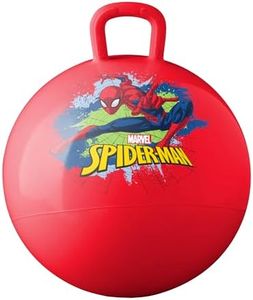We Use CookiesWe use cookies to enhance the security, performance,
functionality and for analytical and promotional activities. By continuing to browse this site you
are agreeing to our privacy policy
10 Best Hopper Balls
From leading brands and best sellers available on the web.Buying Guide for the Best Hopper Balls
Hopper balls, also known as bouncy balls with handles, are a favorite plaything for children and sometimes adults who enjoy a fun, active way to play indoors or outdoors. When choosing a hopper ball, it's important to consider the age, size, and preferences of the user to ensure safety and maximize fun. There are several key features to think about to make sure you pick the best hopper ball for your needs.Size (Diameter)The diameter of a hopper ball is one of the most important factors because it needs to match the height of the user. A ball that’s too small may be uncomfortable or unsafe, while one that’s too large can be difficult to control. Usually, hopper balls come in different sizes, measured in centimeters or inches. Smaller sizes (around 15 to 18 inches) are best for younger children, while larger sizes (20 to 24 inches or more) are better for older kids and adults. To find the right size, the user should be able to sit on the ball with knees bent at about a right angle and feet touching the ground. Always refer to size recommendations based on the user's height and age.
Weight LimitThe weight limit is how much weight the hopper ball can safely handle. This spec is crucial for safety reasons, as using a ball that's not strong enough to support the user can lead to bursting or accidents. Weight limits are usually listed in pounds or kilograms and can range from 100 pounds for smaller children's balls to 200 pounds or more for larger or adult-friendly ones. Always choose a hopper ball where the intended user's weight is well within the stated limit to ensure safe play for a long time.
Handle TypeThe handle on a hopper ball helps the user grip and balance while bouncing. Handles come in different shapes—solid ring handles, or split or double handles. For younger children, a solid handle is often easier to hold with two hands, which adds stability. Older kids or adults may feel comfortable with other types. The handle should be easy to grip, non-slip, and comfortable. Consider the user's hand size and strength when picking the right handle type for added safety.
Material & DurabilityThe material of the hopper ball affects how well it lasts and how safe it is. Most are made from thick, non-toxic PVC or rubber materials that resist punctures. High-quality materials handle frequent use and outdoor play better, while thin or low-quality options can wear out or pop more easily. If you plan to use the ball outdoors or want it to last through lots of use, look for a hopper ball described as heavy-duty or extra-thick. Also, check that it’s free from harmful chemicals if you have small children using it.
Inflation MethodHopper balls need to be inflated for use, so it’s important to consider how easy they are to blow up or deflate. Some require a standard air pump, while others might include their own pump. The inflation method matters if you plan to travel with it or need to store it away after use. Pick an option that matches your needs—whether that’s easy, tool-free inflation, or compatibility with pumps you may already own.
Surface TextureThe outer texture of the hopper ball can make it easier to grip, cleaner to maintain, or better suited for certain surfaces. Some have a smooth finish, while others include grip bumps or a textured surface. Smooth balls are easy to wipe down, while textured ones can give extra grip, especially if the user will bounce energetically or use the ball outside. Think about where and how the ball will be used—indoor use may not need texture, but outdoor or energetic use benefits from more grip.
